price elasticity of demand
description: responsiveness of the quantity demanded of a good or service to a change in its price
20 results
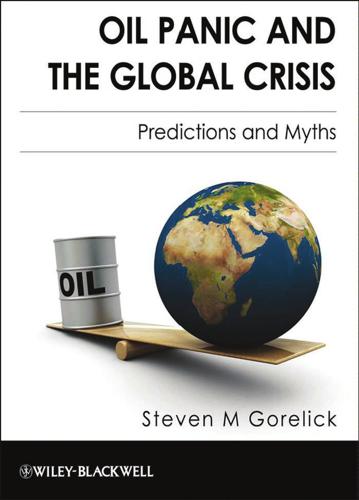
Oil Panic and the Global Crisis: Predictions and Myths
by
Steven M. Gorelick
Published 9 Dec 2009
Gasoline Price Elasticity: What Happens When the Price Goes Up (or Down)? Of great relevance to the discussion of global oil depletion is how the price of gasoline affects consumption. The demand for gasoline is affected by its price. Economists call this effect the price elasticity of demand. If the decrease in demand for a product is very responsive to a relatively small (say 10 percent) price increase, that product has high price elasticity of demand. On the other hand, high price inelasticity (low elasticity), or underresponsiveness, is a measure of the necessity of a product, or consumers’ 46 The Global Oil Landscape addiction to it, such that demand and consumption are only modestly reduced when the price goes up (or vice versa).
…
China raised gasoline prices by 20 percent in June 2008; the value shown is estimated based on the price relative to that in the US in early August 2008. 66. Note that in economic terminology, demand is price elastic if the price elasticity of demand value is greater than 1 and inelastic if the value is less than 1. For example, if the percent decrease in demand is 2.2 percent given a 10 percent price increase, the price elasticity of demand is 0.22. This low price elasticity, or price inelasticity, indicates that price changes of the commodity have The Global Oil Landscape 67. 68. 69. 70. 71. 72. 73. 74. 75. 76. 77. 78. 79. 57 relatively little effect on consumption behavior.
…
“Evidence of a Shift in the Short-Run Price Elasticity of Gasoline Demand,” The Energy Journal, 29(1). Cooper, J. C. B. (2003). “Price elasticity of demand for crude oil: estimates for 23 countries,” OPEC Review, 27: 1–8. US Federal Trade Commission (2005). “Gasoline price changes: The dynamics of supply, demand, and competition,” page 135, citing Epsey, M. (1998). “Gasoline Demand Revisited: An International Meta-Analysis of Elasticities,” Energy Economics, 20: 273–95, for long-term elasticity value and their own analysis for the short-term value. Cooper, J. C. B. (2003). Price elasticity of demand for crude oil: estimates for 23 countries, OPEC Review, 27: 1–8. www.energy.ca.gov/gasoline/gasoline_q-and-a.html Ye, M., J.
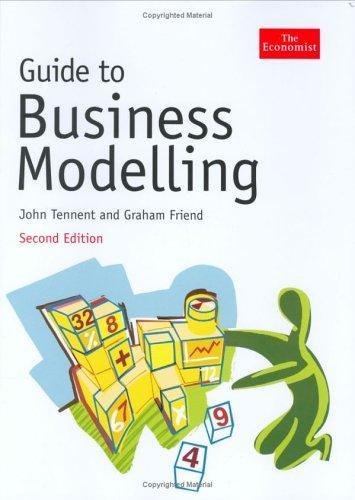
Guide to business modelling
by
John Tennent
,
Graham Friend
and
Economist Group
Published 15 Dec 2005
The total voice revenue for a mobile business could be calculated using the following equation: Average number of customers ⫻ Average number of voice minutes ⫻ Average price per minute To produce the most accurate forecast and to gain the greatest insight into the economics of a business, it is often necessary to generate a forecast for total revenue through a combination of forecasts of the individual elements. Price elasticity of demand Once a revenue forecast is broken down into volume and price effects, the modeller must consider the relationship between changes in price and changes in demand or volume. In many markets, an inverse relationship exists between the price of a product or service and the quantity of that good or service demanded by the customer. This inverse relationship can be seen in the downward-sloping demand curve in Chart 10.1. 87 Approaches to revenue forecasting Chart 10.1 A downward-sloping demand curve The price elasticity of demand is a measure of how sensitive the changes in the quantity demanded by a customer are to changes in price.
…
This inverse relationship can be seen in the downward-sloping demand curve in Chart 10.1. 87 Approaches to revenue forecasting Chart 10.1 A downward-sloping demand curve The price elasticity of demand is a measure of how sensitive the changes in the quantity demanded by a customer are to changes in price. Price elasticity can be expressed mathematically as: Price elasticity of demand ⫽ Q2 ⫺ Q1 Q1 P2 ⫺ P1 P1 Price elasticities are usually negative, reflecting the inverse relationship between price and quantities. Elasticities also vary depending on the position along the demand curve. The slope of the demand curve at a particular point provides an estimate of the price elasticity of demand. Measuring elasticities is a complex subject and a range of techniques can be employed. A detailed discussion of this topic is beyond the scope of this book.
…
FORECASTING REVENUE Chart 10.42 Calculating total revenue The detailed calculations are shown in Chart 10.43 and relate to column H. Chart 10.43 Code for calculating total revenue Row Average market customers Market share Average business customers Price per minute Price elasticity of demand Average usage per year per customer Total revenue (thousands) Calculation ⫽AVERAGE(G34,H34) Input assumption ⫽Average_market_customers *Market_share Input assumption Input assumption ⫽⫺Price_elasticity_of_demand *((Previous_usage*(Previous_ price⫺Current_price))/Previous_ price)⫹Previous_usage ⫽Average_business_customers *Average_usage_per_year* Price_per_minute/1000 Actual calculation ⫽(34803⫹39130)/2 ⫽34% ⫽36966*34% Answer 36,966 34% 12,569 ⫽0.23 ⫽⫺0.47 ⫽0.47*((1600*(0.25 –0.24))/0.25)⫹1600 0.23 (0.47) 1,631 ⫽12569*1631*0.23 /1000 4,714 Mix effects The example above examined the average usage levels for consumer and business customers as a whole.
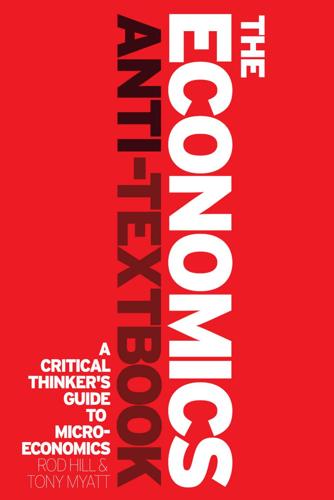
The Economics Anti-Textbook: A Critical Thinker's Guide to Microeconomics
by
Rod Hill
and
Anthony Myatt
Published 15 Mar 2010
Normally, as the price increases, quantity demanded decreases, as seen in Figure 3.1. The responsiveness of quantity demanded to a change in price is measured by the price elasticity of demand. It is defined as: ed = % change in quantity demanded % change in price 46 BANANAS Price P2 P4 Demand for gasoline P1 Demand for bananas P3 Quantity of gasoline Q2 Q1 Q2 Quantity of bananas Q1 figure 3.1 Inelastic and elastic demand Suppose a 10 per cent increase in the price of gasoline leads to a 1 per cent decrease in the quantity demanded. The price elasticity of demand for gasoline is 0.1 (1 per cent divided by 10 per cent). In contrast, suppose a 10 per cent increase in the price of bananas leads to a 70 per cent decrease in the quantity demanded.
…
It turns out that the incidence of the tax depends on the relative size of the price elasticities of demand and supply at the equilibrium prices and quantities. The actual formula (almost never revealed by textbooks) is: es es + ed ed Formula 2: proportion of sales tax borne by producers = es + ed Formula 1: proportion of sales tax borne by consumers = where es and ed are the elasticities of supply and demand in equilibrium. Note that the proportions sum to one – the total tax is split between buyers and sellers. Formula 1 shows that the greater the price elasticity of supply, and the smaller the price elasticity of demand, the more the tax is paid by consumers.
…
Finally, price ceilings provide an incentive for illegal activity – only in this case it is sellers (job seekers) bribing buyers (employers), or employment arrangements out of sight of the law. 1.8 Who bears the cost of sales taxes? Contrary to popular belief, the person who ends up ‘paying’ a sales (or excise) tax is not the same person on whom the tax is levied. Rather, the incidence of the tax depends on the relative size of the price elasticities of demand and supply. The texts demonstrate this proposition using demand and supply diagrams. The left-hand diagram of Figure 3.6 shows supply and demand for parking spaces. We assume the government collects the sales tax from producers of parking spaces. This adds to producers’ costs, so a $4 per unit sales tax shifts the supply curve upwards by $4 per unit for each level of output.

Markets, State, and People: Economics for Public Policy
by
Diane Coyle
Published 14 Jan 2020
One study found that in the UK heavy drinkers indeed prefer drinks with a higher alcohol content, and are also more than three times as likely as light drinkers to switch to a cheaper type of drink (rather than drinking less) when the price goes up.* Using these differential preferences and these differential price elasticities of demand, it is possible to show there would be a big increase in social welfare from introducing higher taxes on high-strength spirits. The researchers also point out that this is a second best world (i.e., the optimal Pigouvian alcohol taxes could have distributional consequences); that the alcoholic beverage industry might have some monopoly power; and that government regulation is an alternative to using Pigouvian taxation
…
For instance, a network with a few big power stations is completely different from one with many wind farms or solar farms. • There are important negative externalities in production—pollution, greenhouse gas emissions, and neighborhood disamenities, such as the buzzing of transmission towers or the whirring of turbine blades. • Electricity is a necessity, with a low price elasticity of demand. • There are equity considerations; in the UK, energy bills account for 6% of average household spending, 15% for low-income households. • Energy is special as well, in that it is fundamental to the rest of the economy—power cuts are much worse than excess capacity, so society needs more capacity than the sum of individual investment decisions would provide, as collective insurance.
…
For example, the prevalence of smoking has declined substantially in many countries since the 1970s. Although the price of cigarettes has increased, in large part due to tax increases, and this has certainly affected the prevalence of smoking (see figure 4.2 for France), assuming the whole decline in smoking to be due to higher prices would imply an implausibly high price elasticity of demand: as tobacco is an addictive drug, a low price elasticity can be expected. A combination of official restrictions, such as higher taxes, bans on smoking in ever more places, health warnings, advertising bans, and the declining social acceptability or coolness of smoking together explain the decline.
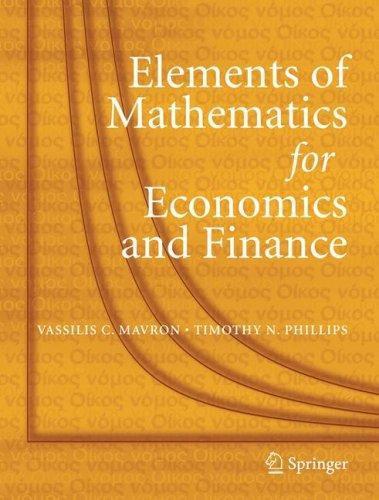
Elements of Mathematics for Economics and Finance
by
Vassilis C. Mavron
and
Timothy N. Phillips
Published 30 Sep 2006
Since will, in practice, be negative (demand ∂P normally decreases with increases in price), then in order to have a positive number for the own price elasticity of demand, we define: change approaches EP = − P ∂Q . Q ∂P 174 Elements of Mathematics for Economics and Finance Therefore: The elasticity EP is approximately the percentage change in the demand Q resulting from a 1% decrease in P . The elasticity EP measures the sensitivity of the good to its own price. Similarly, we can define the cross-price elasticity of demand EPA by EPA = PA ∂Q . . Q ∂PA The elasticity EPA is approximately the percentage change in the demand Q for the good following a 1% increase in the price PA of the alternative good.
…
Thus Q is regarded as a function of the variables P , PA , and Y . Examples are 1. The price of new cars is related to the price of fuel and the income of the driving population. 2. The price of domestic gas and the price of domestic electricity are related. 3. The prices of DVD players and DVDs are related. The own price (or direct price) elasticity of demand EP measures the relative percentage changes of Q and P (with PA and Y assumed fixed). If △Q is the change in Q following a change △P in P, the relative percentage change of Q to that of P is △Q Q △P P As △P approaches 0, then × 100 × 100 = P △Q . Q △P △Q ∂Q approaches ; so the relative percentage △P ∂P P ∂Q .
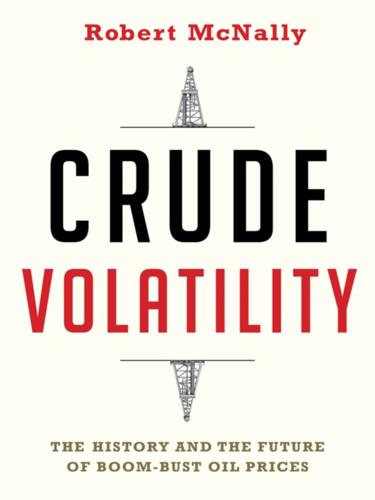
Crude Volatility: The History and the Future of Boom-Bust Oil Prices
by
Robert McNally
Published 17 Jan 2017
While difficult to determine precisely, surveys of the academic literature suggest the short run demand price elasticity of crude is around −0.06.5 That is, a one percent change in price would yield a −0.06 percent change in demand. So a 100 percent increase (doubling) in the price of crude would reduce demand by only 6 percent.6 Compare crude oil’s −0.06 price elasticity with goods whose demand is more sensitive to price changes like restaurant meals or fresh tomatoes, which one study estimated had price elasticities of demand of −2.3 and −4.6, respectively.7 Thus, whereas a 10 percent change in the price of oil would only cause refiners to buy 0.6 percent less crude to turn into gasoline, a 10 percent change in price would cause consumers to buy 23 percent fewer restaurant meals and 46 percent fewer tomatoes.
…
Writing in June 2009, the IEA noted the correlation of financial flows with rising oil prices, but concluded that tight OPEC spare capacity provided a “plausible account of how the fundamentals have changed and provide a clue as to why oil was priced so high in the first half of 2008, fell some 75 percent in the following six months, and is now hovering around $70 per barrel.”53 Energy economist James Hamilton concluded that although the oil price run-up from 2004 to 2008 was influenced by the inflow of investment dollars into commodity futures contracts, oil’s low price elasticity of demand and the failure of production to increase sufficiently prior to the peak explained the phenomenon. Supply and demand, instead of speculation per se, was the cause of oil’s dramatic price moves.54 Officials agree with Hamilton. An interagency task force led by the U.S. Commodity Futures Trading Commission and composed of several federal departments as well as the Federal Reserve, Federal Trade Commission, and the U.S.
…
Hamilton, “Understanding Crude Oil Prices”; see also Hamilton, “Causes and Consequences of the Oil Shock of 2007–2008,” National Bureau of Economic Research Working Paper 15002 (2009), in which he notes that while price elasticities are difficult to measure and debatable, −0.06 appeared to be consistent with the run-up before the peak in 2008 (13–14). For a discussion of estimates of short-term estimates of crude oil demand, see also Difiglio, “Oil, Economic Growth,” 49. 6. Crude demand excludes other inputs such as natural gas liquids and biofuels. 7. Anderson et al., Universal Tuition Tax Credit, 60. 8. Price elasticity of demand = change in quantity demanded divided by change in price. If a 1 percent increase in price causes oil consumption to fall by 0.06 percent, then to cut consumption by 5 percent prices must rise by 83 percent (0.05/0.83=0.06), whereas for fresh tomatoes with a price elasticity of −4.6, prices would rise by 1 percent (0.05/0.01=0.046). 9.
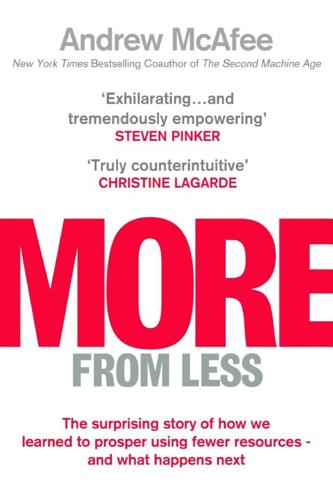
More From Less: The Surprising Story of How We Learned to Prosper Using Fewer Resources – and What Happens Next
by
Andrew McAfee
Published 30 Sep 2019
The very contrary is the truth.… Whatever… conduces to increase the efficiency of coal, and to diminish the cost of its use, directly tends to augment the value of the steam-engine, and to enlarge the field of its operations.” A modern economist would say that Jevons was discussing the price elasticity of demand for energy (in this case, the energy stored inside lumps of coal). This intimidating term just refers to the fact that total demand for a product such as energy responds to a change in its price. For most products, demand goes up if price goes down. Jevons was saying that this was true for coal energy, but he was also saying something more: that the percentage increase in total demand would be greater than the percentage decrease in price.
…
As our population increases, we want more food, but we don’t have any desire to consume more fertilizer or use more land for crops. Jevons was correct at the time he wrote that total British demand for coal was increasing even though steam engines were becoming much more efficient. He was right, in other words, that the price elasticity of demand for coal-supplied power was greater than one in the 1860s. But he was wrong to conclude that this would be permanent. Elasticities of demand can change over time for several reasons, the most fundamental of which is technological change. Coal provides a clear example of this. When fracking made natural gas much cheaper, total demand for coal in the United States went down even though its price decreased.II With the help of innovation and new technologies, economic growth in America and other rich countries—growth in all of the wants and needs that we spend money on—has become decoupled from resource consumption.
…
King, 103 human capital, 233, 236, 261 human rights, 175–76 humanism, 37 Hungary, 174 hunting, 43, 44–45, 95–96, 183 hydroelectric power, 111 increasing returns to scale, 233 Index of Economic Freedom, 172 India, 85, 138, 147–48, 171–72, 174 Indonesia, 148 Industrial Era, 15–33, 56, 63, 99, 122, 130, 168, 177, 190 errors of, 35–51 Industrial Revolution, 16, 22 inequality, 128–29, 197–98, 206–10, 208 infant mortality, 28 urban, 23 innovation, 111–12, 114, 121–22, 141, 203 institutions, 159–61, 209 intellectual property, 116 internal combustion engine, 26–28, 30, 189 International Convention for the Regulation of Whaling, 163 International Rice Research Institute, 32 Internet, 169, 236 IPAT Model, 62, 63, 64 iPhone, 102, 111, 112, 235 Isenberg, Andrew, 44, 45 Ishokov, Aleksandr, 164 Ivashchenko, Yulia, 163 Jackson Hole National Monument, 260 Jacob, Jeffrey, 91 Jamaica, 37 Janah, Leila, 255–56 Japan, 106 Jevons, William, 47–48, 51, 56, 60, 63, 69, 77, 99, 108, 122, 141, 237 Jobs, Steve, 111, 112, 235 Johnson, Lyndon B., 29n Johnson, Tom, 171 Jones, Bruce, 174 journalism, 180 Kedrosky, Paul, 72 Keiser, David, 190 Khan Academy, 262 “Kissinger Report, The,” 56 Knowledge Illusion, The (Sloman and Fernbach), 226 Krauth, Tobias, 148 Lacey Act, 96 Lacey, John, 96 Lakner, Christoph, 221 Las Casas, Bartolomé de, 39–40 Laue, Max von, 30 Law on Cooperatives (1988), 171 Le Guin, Ursula K., 114–15 lead, 95 leather, 45 Leopold II, King of Belgium, 39 Li Keqiang, 146 Life, 61 life expectancy, 13, 32, 196–97 limits, imposing of, 65–67, 93–97 Limits to Growth, The, 57–58, 65, 66, 71, 93, 119–20 Lincoln, Abraham, 37, 38, 121 Linux operating system, 235–36 Litton, Martin, 61 living standards, 9–10, 32, 69 Lomborg, Bjorn, 179, 181 London, 22–23, 26 Lovins, Amory, 58–59 MacLeish, Archibald, 54 Macron, Emmanuel, 155, 250 Maddison, Angus, 9, 13 Maduro, Nicolas, 134–35, 137–38 Magee, Christopher, 73 Magie, Elizabeth, 203 Malthus, Thomas Robert, 7–8, 9, 10, 13, 15, 20, 131, 237 mammals, biomass of, 33 Mann, Charles, 31 manufacturing, 202, 239–40 Mao Zedong, 170 Marine Mammal Protection Act (1972), 96 market fundamentalism, 131–32, 133 Marshall, Alfred, 47–48, 50–51, 63, 99, 108–09, 141, 6977 Martha’s Vineyard Fishermen’s Preservation Trust, 263 Marx, Karl, 21, 130, 131 material intensity, 75 maternal mortality, 196–97 Mattis, James, 211–12 Maybach, Wilhelm, 27 Meadows, Donella, 57 Mesthene, Emmanuel, 114 metals, 56, 79 Mexico, 137, 139 Microsoft, 102, 257 Milanovic, Branko, 221 Mill, John Stuart, 180 Miller, Grant, 28 Mines Act (1842), 38 Mises, Ludwig von, 40 Mokyr, Joel, 122 Molina, Mario, 149 monopolies, 202–03, 204 Monsanto, 155 Montreal Protocol, 150, 249 Morris, Ian, 24–25, 60n Most Powerful Idea in the World, The (Rosen), 16 motors, 27 Mussolini, Benito, 40 Naam, Ramez, 31 National Security Council, 56 Native Americans, 44–45 natural gas, 103, 104, 109, 110, 188 Nature Wars (Sterba), 43–44 negative bias, 179–81 negative externalities, 142, 186, 247–48, 253 Nelson, Gaylord, 61 Neolithic revolution, 12 New Pioneers (Jacob), 91 New Testament, 127 New York Times, 53, 61–62, 147 Newcomen, Thomas, 16 Nicholas, Kim, 185 nitrogen, 30–31 nitrogen pollution, 190 Nixon, Richard, 66 Nokia, 102, 111 nonprofits, 259–63 Nordhaus, William, 248–49 Norquist, Grover, 132 North, Douglass, 159 North Korea, 133 nuclear energy, 58–59, 110, 251–52, 266 nuclear fusion, 240–41 Nunn, Nathan, 268 nutrition, 23–24, 32, 177, 193 ocean acidification, 190 O’Hanlon, Michael, 174 oil, 135–36 one-child policy, 93–94 Ostrom, Elinor, 182 Our World in Data (website), 179, 180 overdoses, 215, 216 ozone layer, 149–50, 228 Pacific Steam Navigation Company, 17 Paddock, William and Paul, 55–56 Paris Agreement, 158 partial excludability, 232–33 passenger pigeon, 42–43, 96, 152, 181 Pasteur, Louis, 23 Patagonia National Park, 260 patents, 19, 116, 232, 235 peak oil, 102–05 peak paper, 90, 113 “Peak Stuff” (Goodall), 76–77 pertussis, 227 Peru, 138 Petroleum Reitwagen, 27 phones, 168–69 Pinker, Steven, 37, 122, 176, 177, 179 Plain Cookery Book for the Working Classes, A (Francatelli), 23–24 plastics, 83, 252 plumbing, indoor, 26, 28–30, 168 Poland, 92 polarization, political, 224–25, 254 Politics of Resentment, The (Cramer), 221 pollution, 5, 23, 35, 36, 40–42, 54–55, 63, 66–67, 95, 141, 142, 157, 160–61, 167, 266 globalization of, 148–50 markets for, 143–44 Poole, Robert, 54 population, 13, 32–33, 62–63, 88, 192 of England, 10–11 global, 55–56, 65–69, 71 limiting, 93–94 oscillation in, 8–12, 15, 17, 31 Population Bomb, The (Ehrlich), 55, 65 poverty, 10–11, 179–80, 181, 189, 191–92, 215 Poverty and Famines (Sen), 69 precision agriculture, 242–43 price elasticity of demand, 49, 108–09 Principles of Economics (Marshall), 50–51 private ownership, 117, 170 “Problem of Social Cost, The” (Coase), 143 profit-seeking companies, 115–16 property rights, 116, 133 proteins, 239–40 public awareness, 3–4, 145–48, 153, 154, 158–59, 161, 167–68, 176–78, 226 Public Health Service, US, 55 Putnam, Robert, 212, 213 Radio Shack, 102 railroads, 18, 19, 26, 105–06, 109–10 Rand, Ayn, 132 rare earth elements (REE), 106–08, 109, 110 Reagan, Ronald, 132 rebound effect, 72–73 reciprocity, 212, 213, 217 recycling, 64–65, 90–91 reforestation, 184, 185 regulation, 5 regulatory capture, 129 religion, 115 renewable energy, 111 resource availability, 119–20 resource consumption, 56–58, 63–64, 78–79, 99, 119–20 responsive government, 3–4, 145–48, 153, 154, 158–59, 161, 167–68, 175–76 Return of Nature, The (Ausubel), 4–5 Ricardo, David, 19n Ridley, Matt, 161 Riley, James, 13 Ripley, S.

Economics Rules: The Rights and Wrongs of the Dismal Science
by
Dani Rodrik
Published 12 Oct 2015
The tax might be administered on oil companies, but it might be consumers who really pay for it through higher prices at the pump. Or the extra cost might be imposed on consumers in the form of a sales tax, but the oil companies might be forced to absorb it through lower prices. It all depends on the “price elasticities” of demand and supply. With the addition of a longish list of extra assumptions—on which, more later—this model also generates rather strong implications about how well markets work. In particular, a competitive market economy is efficient in the sense that it is impossible to improve one person’s well-being without reducing somebody else’s.
…
We might as well assume that these types of cars are perfect substitutes. But if the tax is on luxury cars alone, the perfect-substitutes assumption is no longer innocuous. The effects on government revenue and car sales will depend critically on the size of what economists call the cross-price elasticity of demand (the sensitivity of demand for one category of goods to the price of another category). The larger this elasticity (in absolute value), the greater the shift in consumer purchases from large to small cars, and the lower the tax revenues collected by the government. Economists have to ensure that their prescriptions hold even when assumptions become more realistic.
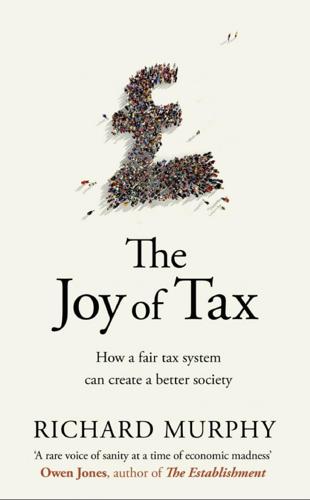
The Joy of Tax
by
Richard Murphy
Published 30 Sep 2015
For instance, tobacco and alcohol products carry additional charges that help fund the impact upon health services, and the cost of care for those who suffer the consequences of using these products. Now, some will be cynical about this claim that such taxes are charged to reflect the externalities inherent in the products to which they relate. They will instead say that because the products in question are either essential or addictive they have what is called a very low price elasticity of demand, meaning that if tax is added to them, even in significant amount, the demand for the product remains largely intact and that this simply makes them a very easy way of raising tax. There is no question but that the price inelasticity of such products has been exploited in the past (as, for example, with the tax imposed on tea imported into the USA which gave rise to the Boston Tea Party and all that followed from it), but it is now likely that the correction of externalities not reflected in their prices is the main reason for taxing these items.
…
K. 51 GDP 171 debt and 213 and economy 84 fiscal policy and 58–9 government spending as proportion of 76+n, 77, 81–2 taxation as proportion of 34–5 General Anti-Abuse Rule 112, 113, 224 General Anti-Avoidance Principle, proposed 224 Generally Accepted Accounting Principles, UK 222 gifts 183, 184 gilts 49–52 Gini coefficient 63n global warming see climate change global wealth tax 190 Global Witness 124 Google 135 government(s) 27, 39–40 balancing books/budget 52, 60–1, 76, 86–7, 94–5, 212–13, 238 borrowing 89 businesses, mistaken analogy with 86–7, 89 and creation of money 49, 209–10 demand for services to be supplied by 157–60 and the economy 104, 156–60, 170, 210 (see also austerity) intervention following 2008 crash 78, 79 and ownership 59 participation and 31, 37–44 spending see government spending states without 32 surpluses 58, 59, 60, 76–8, 130 and ‘taxpayers’ money’ 39–44 see also democracy government debt 46, 49–52, 59–60, 87, 213–14 government spending and business success 185 effects of cutting 89–90 flat taxes and 75 need for 95–6, 210 relationship to taxation 45, 52–5, 80–4, 162, 210, 211–12, 214 Greece 148 Green New Deal Group 9, 10 Green parties 84, 94 growth 83, 84, 90, 104, 158, 170, 171–2, 215 Guernsey 124 harmonization, international 133 health services 64, 158, 168 see also NHS Heritage Foundation 35 HM Treasury 109, 110–11, 114, 117 HMRC 112–14, 116, 119–21 access to 118–21, 202–3 and accountability 116–18, 203, 204–6, 218–20 attitudes 119–20 on compliance 33–4, 35, 67 and data exchange 123–4, 127 and research 108, 110 staff and resources 113, 120–1, 202–4 structure and governance 203–4, 219, 220 Hodge, Margaret 114, 117 horizontal equity 138–9, 197 House of Commons Library 109 House of Commons Select Committees 205, 220–1 see also Public Accounts Committee and Treasury Committee house prices 185–6, 214, 225–6, 229 housing 159, 175–6, 186, 225–7, 228–9, 238 housing support 192, 194, 229 identity theft 201 ignorance 68, 108 illegitimate economic activity 56 imports 88 income(s) 180–1 falling in real terms 83, 90 sources of 138–9 taxation and 31 under-declaration of 98–9 income tax 14, 16, 65, 163–5, 230 citizen’s income and 193–4 higher rates 73 as proportion of tax paid 28, 29, 30, 72 schedular form 152 tithing and 15 as universal 235 voting and 65 inequality 63n, 74 see also equity/equality and redistribution inflation 46, 53, 54, 57, 59, 61, 182, 210 flat taxes and 75 house prices and 185–6 influence 31, 37 information exchange 123–4, 127, 184 infrastructure 158–9, 229 inheritance taxes 15, 29, 31, 73, 183, 226 innovation 136–7 Institute of Directors 68–9, 72 Institute of Economic Affairs 68–9, 70–1, 101 Institute for Fiscal Studies 109 insurance premiums 29, 223 interest 51, 52n, 58, 181–2 banks and 49, 50 monetary policy and 59 money and 51 tax and 30, 196, 223, 228–9, 231 interests 69, 70, 71, 109, 113, 116 conflicts of 115 government and 19, 44 intergenerational contract 143 International Financial Reporting Standards 222 International Financial Reporting Standards Foundation 199 international issues 133–6, 197–8 see also tax havens interpretation 111–12, 153 investment 89, 176, 234 savings and 209, 231 investment income 72, 98, 99, 138, 163, 180, 224, 231–2 Ireland 126, 134, 146, 163 ISAs 175, 231 Jersey 10, 124, 126 Jesus 16 Joffe, Lord 114–15 Kennedy, John F. 32n labour, taxing 190 see also national insurance land ownership 185 land value tax, proposed 186–7, 227–8 land-based taxes 15, 16, 21, 163, 164, 185–7 landfill tax 31 landlords 228, 229 language 115–16, 153, 196, 218 law 36–7, 39, 148, 153 complexity 154, 217 letter and spirit of 112, 153, 154, 218 purposive basis 112, 217–18 law and order 132, 159 Lawson, Nigel 182 lawyers 69, 102, 114, 116, 217 liability 184, 221, 225, 226 see also companies libertarians and libertarian views 39–40, 42, 68–80, 132 life expectancy 167n, 168 Lincoln, Abraham 61+n living standards/needs 35, 57, 61, 141–4, 168 loans 47–8+nn, 49–52, 208, 209 repayment of 49, 50, 53 local government 65, 186 see also council tax London, City of 18–19, 187 loopholes 97, 112, 153–4, 168, 187, 196, 197 Luxembourg 126, 134–5, 146 macroeconomics 85, 87–8, 161, 165, 170–1 Magna Carta 18–19, 22, 37, 131 Man, Isle of 124, 126 marginal tax rates 145, 172–3, 174, 192, 194, 235 markets, government policy/taxation and 58–9, 61, 63–4, 170–1, 187–8, 191, 212, 215, 236 marriage 24–5, 225 Mazzucato, Mariana 136 Meacher, Michael 153–4 media comment 157, 158 microeconomics, misapplication to government 86–7 middle ground in politics 157–8 minimal-state ideology 155–6, 158 Mirrlees Review 109 misconceptions 86 mistrust 152, 154 Mitchell, Dan 134 monarchy 20–2, 117, 219 monetary policy 58, 59–60 money 46–7 creation of 45–52+nn, 53, 86–7, 181–2, 208–9, 214 debt and 213 decreasing value to individuals 144–5, 181 destruction of 48n, 49, 53, 213 and the economy 209 equivalence 181, 224, 233 importance of 57 profit and 48–9 promises and 49, 51, 56 tax and 14, 56–7, 85–8, 180 value of 56–7, 66 see also bank transactions and financial transactions mortgages 89, 228–9 MPs, resources available to 109–10, 112 multinational companies 124–7, 150–2, 198, 201, 222 Murphy, Richard 110, 112, 113, 126, 131n, 153–4, 192, 203n mutuality 133 nation states 23, 24, 25–7, 35 National Audit Office 205 national debt 46, 52, 76, 213 national insurance 167–9, 172–3, 189, 232 and benefits system 189, 191 as proportion of tax paid 29, 161, 169, 189 proposals for replacing 72, 164, 189, 190, 194, 232–3 and unearned income 231–2 needs 57, 141–4 see also sufficiency Netherlands, the 126, 135, 146 NGOs 110 NHS 158, 167, 189 Northern Ireland 166 objectivity 105 OECD 125, 126, 134n, 150, 151 Office for Budget Responsibility 52, 91–3, 205 Office for Tax Responsibility, proposed 205, 220–1 offshore arrangements 99–100, 190 oil 35, 63 opacity see secrecy Osborne, George 59, 76–8, 82, 90–1, 174 overdrafts 48 ownership, tax and 38–44 Oxford Centre for Business Taxation 108–9, 110 Oxford Dictionary, definition of tax 30–2, 35–6, 37, 43 Paine, Thomas 24 parties, political 84, 94 partnerships, business 42 partnerships (marriage) 24–5, 225 Paul, St 16 Pay As You Earn 167, 173 PCS (Public and Commercial Services Union) 203n peace 131–3, 136, 137 Peasants’ Revolt (1381) 20, 37 pension funds 50, 60 pensioners 72, 232 pensions 143, 167, 168, 174–5, 189, 192, 235 citizen’s income and 192 personal allowances 72, 193, 230, 235 Pickett, Kate 145 Piketty, Thomas 190 Plaid Cymru 84, 94 plutocracy 71 politicians 84–5 poll taxes 15, 16, 20, 33, 37, 186 pollution 63, 191, 212 poverty 192, 194 power 17, 20, 23 price elasticity of demand 64 product safety 159 profit, banking and 48–9 profit-shifting 134–5 proof, onus of 196, 217, 224 property taxation and 31, 39–44, 54, 71 see also council tax, housing and land property rights 39, 41, 42–3, 132 protest 33, 37 see also conflict Public Accounts Committee, House of Commons 109, 114, 117, 204 public spending see government spending Quaker beliefs 10, 131n quantitative easing 46, 47n, 49–52, 58, 60, 229–30, 238 Rabushka, Alvin 78–9 recession 78, 79–80, 191 reciprocal rights and double tax treaties 223 reclamation see under tax/taxation redistribution 62–3, 66, 144, 185, 230, 238 Reed, Howard 192 representation, taxation and 19–20, 22–7, 31, 37–8, 65, 66, 70–1 repricing, tax as 64, 66 research 108–10, 135–6, 236 responsibility 39 retirement, saving for 174–5, 231 see also pensions right-wing views 68–80, 156–7, 158 rioting 33 road use 191 Roman Empire 15–16 Rousseau, Jean-Jacques 26–7 royalties 181, 223 sales taxes 15–16, 163, 187 see also VAT saving 59, 87, 89+n, 90–1, 172 investment and 209 tax and 175, 231 schools 108 Scotland 33, 37, 166 independence referendum (2014) 23, 24, 26, 128–9 Scottish National Party 84, 94 secrecy 69, 99, 122, 151, 152, 201 secrecy jurisdictions 135 seigniorage 182 self-employed people 98, 167, 168, 173 shadow economy 55–6, 146–8 shareholders 200–1, 233 simplicity 133, 152–5, 218, 230, 236 of money creation 51 see also flat taxes Singapore 126 skills, funding 136–7 Smith, Adam 24, 70, 129–31, 137 smuggling 14, 163 social contract 26–7, 132–3 social mores, taxation and 24–7 social security systems 191–2 see also welfare benefits socialism 157 speculation 171, 185, 187, 214, 224 Spirit Level, The 145 stamp duty 29, 73, 187, 228 Starbucks 135 states and statehood 23, 24, 25–7 extent of role 156–60 see also government(s) stigma 194, 235 student loans 173–4 subjectivity 105 sufficiency 141–4 sustainability 57, 215 Switzerland 135 tax/taxation acceptance of 25–6, 32–8, 67–8, 96 administration of 16, 123, 219–21 (see also HMRC) alternatives to 45–7 and choice 68, 96, 103, 106, 126–9 as counterbalance 53–5 definitions and perceptions of 30–2, 35–6, 37, 40–4 education concerning 102, 106–8 efficient 160–1 embracing 25, 27, 44, 238 functions 55–66 history 13–26 inclusivity and default 196, 217 indirect 74 ownership 38–44, 216 payment in kind 14, 15, 16 political context 37–9, 105 process, stages of 122–3 progressive 15, 139, 145, 181, 189, 230 and property 39–44, 54 as proportion of income 74–5 range of and proportions of revenue raised in UK 28, 29 reasons and purposes for 52–66, 160, 178 as reclamation of money spent 52–5, 75, 81, 180, 210 regressive 139, 189–90, 227, 237 responsibility for 219 right to spend 39 scope of 196, 217 unacceptable 33, 37 see also under government spending tax abuse 14, 16, 96–102, 103, 168, 195–6 victims of 101 see also tax avoidance and tax evasion tax avoidance 43, 96–7, 99–102, 103, 110, 173, 198 anti-avoidance principle 112, 113, 196 flat taxes and 74 proposed legislation against 153–4, 224, 236 tax base(s) 16, 31, 122, 179, 222–3 defining 179, 196 finding 197, 201 inclusive 195–7, 217 inconsistent 183 tax competition 133–4, 135–6 tax design 169 tax evasion 43, 69, 96–9, 100–1, 103, 110 tax gap 110, 220 tax havens 35, 69, 99–102, 123–4, 126, 134, 135–6, 201–2 registration of companies in 151 and secrecy 149–50 UK and 146, 174 wealth taxes and 184 tax justice 220 tax justice movement 149, 151, 184, 201 Tax Justice Network 9, 124 tax offices 118–21 tax policy 156, 229–30 tax reliefs 25, 97, 165, 175, 176, 196 Tax Reporting Standards Board, proposed 222 Tax Research Network 109 Tax Responsibility, Office for, proposed 205, 220–1 Tax Select Committee, proposed 205 tax systems 129–55, 168–9, 171, 178–80, 224 Taxation, Department of, proposed 219–21, 227 Taxation and State-Building in Developing Countries (Brautigam et al.) 26n Taxpayers’ Alliance 68–9, 70, 72 ‘taxpayers’ money’ 39–44, 216 Teather, Richard 101 technology 135–6, 176 temporary residence rule, proposed 197, 222 tenants 228, 229 Thatcher, Margaret 33, 68, 70, 86, 101 theft 36, 43, 44 tithing 15 tobacco 64, 74, 191 trade deficit 89 transparency 123–7, 216 transport 158–9, 176, 191 Treasury Committee, House of Commons 117 tribunals 118 trust 119–20, 148–9, 152, 154 trusts 42, 184 truth 30, 52, 84, 133, 146–52 Turner, Adair 52n 2020 Tax Commission 72, 75, 76 Tyler, Wat 20 UK aggregate tax rate 35 proportion of tax taken by different taxes 28, 29, 139 right to leave 32 shadow economy 146 and tax havens 146, 174 tax paid by income decile 139–40 UK GAAP 222 ‘UK plc’ 86 UK political parties 84, 94, 157–8 unemployment, effects 83, 89 universal credit 174 universities 107–9 US dollar 55–6 USA, Declaration of Independence 22–3, 24, 26 VAT 64, 74, 174, 187, 189, 236–7 exemptions 64, 236 as proportion of tax paid 29, 161 vertical equity 139 Virgin Islands, British 124 voting rates 42, 65 Walmart 150 Walmsley, Brad 70–1 wars 18, 53, 131–2 wealth concentration of 185 taxation and 28–30, 31, 73–4, 180–7, 190–1 Wealth of Nations, The (Smith) 24, 129–31 wealth taxes 16, 123, 163, 165, 183–7 global 190, 226–7 proposed 226–7, 228 see also financial transactions tax welfare benefits 62–3, 167 interaction/integration with tax 142, 174, 191–5, 234–6 national insurance and 189 unclaimed 194 as universal 235 welfare state 142–3 well-being, taxation and 35, 61 Wilkinson, Richard 145 work 194–5, 238 see also employment World Economic Forum 74 Worstall, Tim 71 Zimbabwe 35 About the Author Richard Murphy is a UK chartered accountant.

Lean Analytics: Use Data to Build a Better Startup Faster
by
Alistair Croll
and
Benjamin Yoskovitz
Published 1 Mar 2013
Every startup makes money from different things, so there’s no easy way to compare pricing across companies. But you can learn some lessons from different pricing approaches. A fundamental element of any pricing strategy is elasticity: when you charge more, you sell less; when you charge less, you sell more. Back in 1890, Alfred Marshall defined the price elasticity of demand as follows: The elasticity (or responsiveness) of demand in a market is great or small according as the amount demanded increases much or little for a given fall in price, and diminishes much or little for a given rise in price.[83] Unlike Marshall, you have the world’s greatest pricing laboratory at your disposal: the Internet.
…
[77] http://www.startupcompass.co [78] http://paulgraham.com/growth.html [79] http://startup-marketing.com/authentic-growth-hacks/ [80] http://en.wikipedia.org/wiki/Technology_adoption_lifecycle [81] http://www.chasminstitute.com/METHODOLOGY/TechnologyAdoptionLifeCycle/tabid/89/Default.aspx [82] http://www.avc.com/a_vc/2011/07/301010.html/ [83] http://en.wikipedia.org/wiki/Price_elasticity_of_demand [84] http://www.guardian.co.uk/technology/2012/oct/22/smartphone-patent-wars-explained [85] http://mailchimp.com/resources/research/ [86] http://mailchimp.com/resources/research/email-marketing-benchmarks-by-industry/ [87] http://mailchimp.com/resources/research/email-marketing-subject-line-comparison/ [88] The 2012 Digital Marketer: Benchmark and Trend Report, Experian Marketing Services (http://go.experian.com/forms/experian-digital-marketer-2012)
…
value of created content, Engagement Funnel Changes Pirate Metrics model, Analytics Frameworks pivot tables, Creating an Answers-at-Scale Campaign pivoting products and markets enterprise startup lifecycle and, The Enterprise Startup Lifecycle Parse.ly case study, Customer Lifetime Value > Customer Acquisition Cost Revenue stage on, Market/Product Fit Socialight case study, Socialight Discovers the Underlying Metrics of Pricing Platform as a Service (PaaS) model, Model Two: Software as a Service (SaaS) platform model, The Minimum Viable Vision Please Stay Calm app, Model Three: Free Mobile App PM Solutions study, Slower Cycle Time Porter, Michael, Stage Five: Scale post-sales support metric, Support Costs predict-before model, Empathy: Find Problems, Don’t Test Demand predictive analysis, Keywords and Search Terms price elasticity of demand, Number of Engaged Visitors, Socialight Discovers the Underlying Metrics of Pricing Price Intelligently service, Pricing Metrics price sensitivity testing, Socialight Discovers the Underlying Metrics of Pricing Price, Richard, Attacking the Leading Indicator Priceline site, Model Six: Two-Sided Marketplaces pricing metrics determining normal values for, Number of Engaged Visitors setting pricing correctly, What Mode of E-commerce Are You?
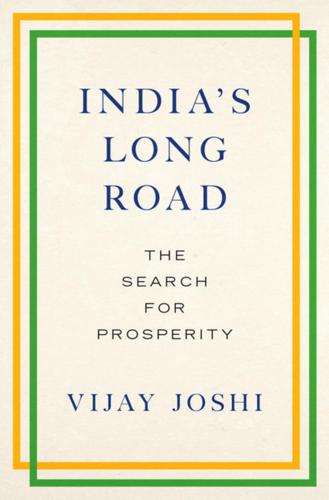
India's Long Road
by
Vijay Joshi
Published 21 Feb 2017
Technical note: It is often claimed on the basis of econometric estimation that the price elasticity of demand for Indian exports is quite low (for example see Rangarajan and Mishra 2013 and Kapur and Mohan 2014). In my opinion, this result is the result of estimating export equations that mix up demand and supply. Robust elasticity estimates require a structural model in which export demand and supply equations are estimated in a simultaneous equation framework. Joshi and Little (1994) did this for the period 1960–1990 and found a short-r un price elasticity of demand for exports greater than one, and a long-r un price elasticity of demand of three (with 80 per cent of the long-run effect coming through within two years), across a wide range of specifications.
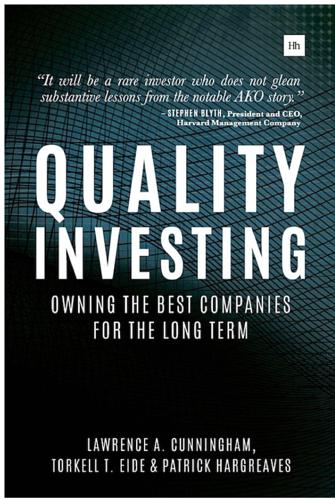
Quality Investing: Owning the Best Companies for the Long Term
by
Torkell T. Eide
,
Lawrence A. Cunningham
and
Patrick Hargreaves
Published 5 Jan 2016
The genuine rarity of some items makes them collectors’ items, such as a fuchsia crocodile Hermès Birkin bag that recently sold for $223,000 at a Christie’s auction in Hong Kong. Hermès has a high degree of control over the distribution of its products, thanks to its own-store network, giving it complete authority over pricing. Hermès products are almost never discounted. Price increases are common and always at least in line with general price inflation. The price elasticity of demand is negligible, reflecting the perverse fact that the more expensive a luxury item gets, the more desirable it can become. The combination of these features gives Hermès unmatched pricing power. The benefits are reflected in Hermès’ compelling financial characteristics: cash flows are strong and predictable thanks to operating margins exceeding 30%; return on invested capital exceeds 30%; the compound annual growth rate of sales during the past two decades is 11%, with the worst year in the period being 4% in 2009.

Circus Maximus: The Economic Gamble Behind Hosting the Olympics and the World Cup
by
Andrew Zimbalist
Published 13 Jan 2015
It would have been insensitive and ill advised to compete against churches, synagogues, hospitals, YMCAs, Girl Scouts and all the other worthy organizations that rely on charity for their survival. Also, the USOC relies almost entirely on donations and we didn't want to compete for the same dollars” (Made in America, p. 60). 31. Ueberroth, Made in America, p. 121. 32. The extent to which it does one or the other depends on what economists call the price elasticity of demand. The more sensitive consumers are to price changes (the higher the elasticity), the more the tax on hotels or car rentals will lower demand for travel to the city. 33. An exclusive product category refers to a type of product, for example beer, and a single company being the only one allowed to advertise in that category during the competition or in association with the Olympics.
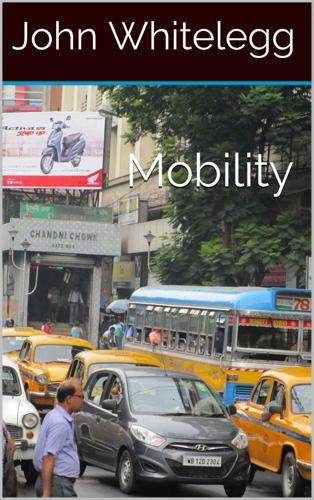
Mobility: A New Urban Design and Transport Planning Philosophy for a Sustainable Future
by
John Whitelegg
Published 1 Sep 2015
Road pricing and urban freight transport. Urban freight platforms. Boege, S (1995) The well-travelled yoghurt pot: lessons for new freight transport policies and regional production, World Transport Policy and Practice, Volume 1, Number 1, 7-11. Brons, M, Pels, E, Nijkamp, P and Rietveld, P (2002) Price elasticities of demand for passenger air travel: a meta-analysis. Journal of Air Transport Management 8, 165-175. Brown, L (2009) Plan B 4.0. Mobilizing to save civilization, Earth Policy Institute, W W Norton and Company. Burke, M and Dodson, J (2014) Suburban density: disrupting the density debate in Gleeson, B and Beza, B (2014) The Public City.

The Plundered Planet: Why We Must--And How We Can--Manage Nature for Global Prosperity
by
Paul Collier
Published 10 May 2010
It takes six kilos of grain to produce one kilo of beef, and so the switch to protein is raising grain demand. The two key parameters in demand are income elasticity and price elasticity. As a rule of thumb, the income elasticity of demand for food is low: if income rises by a fifth demand for food will rise by around a tenth. The price elasticity of demand for food is only around one-tenth; people simply have to eat. This implies that were the supply of food fixed, to choke off an income-induced increase in demand of 10 percent the price would need to double. As this example illustrates, quite modest increases in global income will drive prices up alarmingly unless matched by increases in supply.

Open for Business Harnessing the Power of Platform Ecosystems
by
Lauren Turner Claire
,
Laure Claire Reillier
and
Benoit Reillier
Published 14 Oct 2017
We will also see in Chapter 13 that the extent to which multihoming is possible has implications for regulators and competition authorities. Price elasticity We all know that the demand for products and services changes depending on their price. If the price of baked beans goes up, people will buy fewer cans – and vice versa, if the price goes down, more baked beans are sold. The price elasticity of demand reflects this by giving the percentage change in quantity demanded for a 1% change in price. It is the quantitative articulation of the question ‘How many more cans of baked beans will I sell if I decrease the price by 1%?’ A small change in price of some goods sometimes results in a large change in demand.
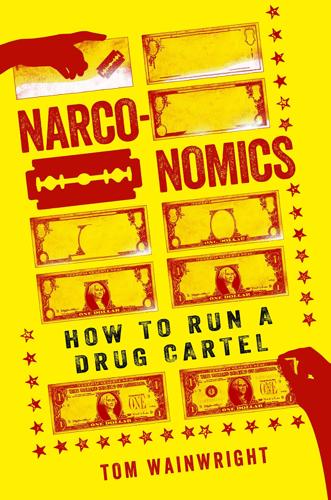
Narconomics: How to Run a Drug Cartel
by
Tom Wainwright
Published 23 Feb 2016
Peter Reuter, Understanding the Demand for Illegal Drugs (Washington, DC: National Academies Press), at http://www.nap.edu/catalog/12976/understanding-the-demand-for-illegal-drugs. 3. The extent to which they cut their prices, if at all, depends on the elasticity of supply. For further discussion of this, see this 2002 paper on the elasticity of the demand and supply of drugs, published by the Department of Justice: William Rhodes et al., “Illicit Drugs: Price Elasticity of Demand and Supply,” at https://www.ncjrs.gov/pdffiles1/nij/grants/191856.pdf. 4. Keene’s dangerous Pumpkin Festival was reported in “Cops or Soldiers?” in the Economist on May 22, 2014, by my fearless colleague Jon Fasman, at http://www.economist.com/news/united-states/21599349-americas-police-have-become-too-militarised-cops-or-soldiers. 5.
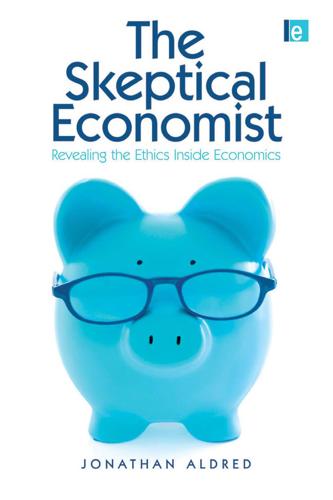
The Skeptical Economist: Revealing the Ethics Inside Economics
by
Jonathan Aldred
Published 1 Jan 2009
As Paul Krugman puts it: ‘Productivity isn’t everything, but in the long run it is almost everything’ (Krugman [1997], p11). Note that an expanding population may ensure growth without productivity improvements, but it will also increase the demand for public services. 43 Moller (2001). Technical note: more precisely, whether the services sector takes a growing share of output depends on the price elasticity of demand for its products, their income elasticity, and the ratio of productivity in the services sector to economy-wide productivity. Intuitively if, say, demand grows strongly with income but is insensitive to price increases (and service productivity lags behind), then the net effect of economic growth will be a rise in demand for the service, despite a higher price.

Virtual Competition
by
Ariel Ezrachi
and
Maurice E. Stucke
Published 30 Nov 2016
Revue des droits de la concurrence 3 (2007): 34–38, http://ec.europa.eu/dgs/competition/economist/concurrences _03 _ 2007.pdf. Note, for instance, a study of air travel fares: “The results are consistent with the hypothesis that, as more carriers operate on a given route, the carriers’ competition for consumers with higher price elasticity of demand increases, while fares charged to consumers with inelastic demand stay high”; J. Stavins, “Price Discrimination in the Airline Markets: The Effect of Market Concentration,” Review of Economics and Statistics 83 (2001): 200. In line with this rationale, the competition agencies in a merger review may seek to maintain price discrimination when it protects buyers who cannot pay a higher, uniform price.
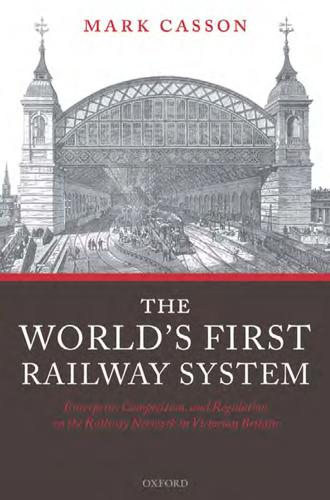
The World's First Railway System: Enterprise, Competition, and Regulation on the Railway Network in Victorian Britain
by
Mark Casson
Published 14 Jul 2009
Although the method was just as unsuitable for canals as for railways, the canal system never became so extensive as the railway system because the railways arrived so soon after the canals, and so the problem was not fully appreciated. Setting maximum fares is particularly important where the price elasticity of demand is low—that is, the number of people who wish to travel is largely invariant to the price. Most railway companies believed that demand was inelastic—especially for Wrst class travel—and so wished to charge as high a price as possible, subject to the regulations. Where the regulated fare by a direct route was well below the maximum that the customer was willing to pay, it paid the company to send the customer via an indirect route instead—a principle well Regulation 247 known to some taxi-drivers.